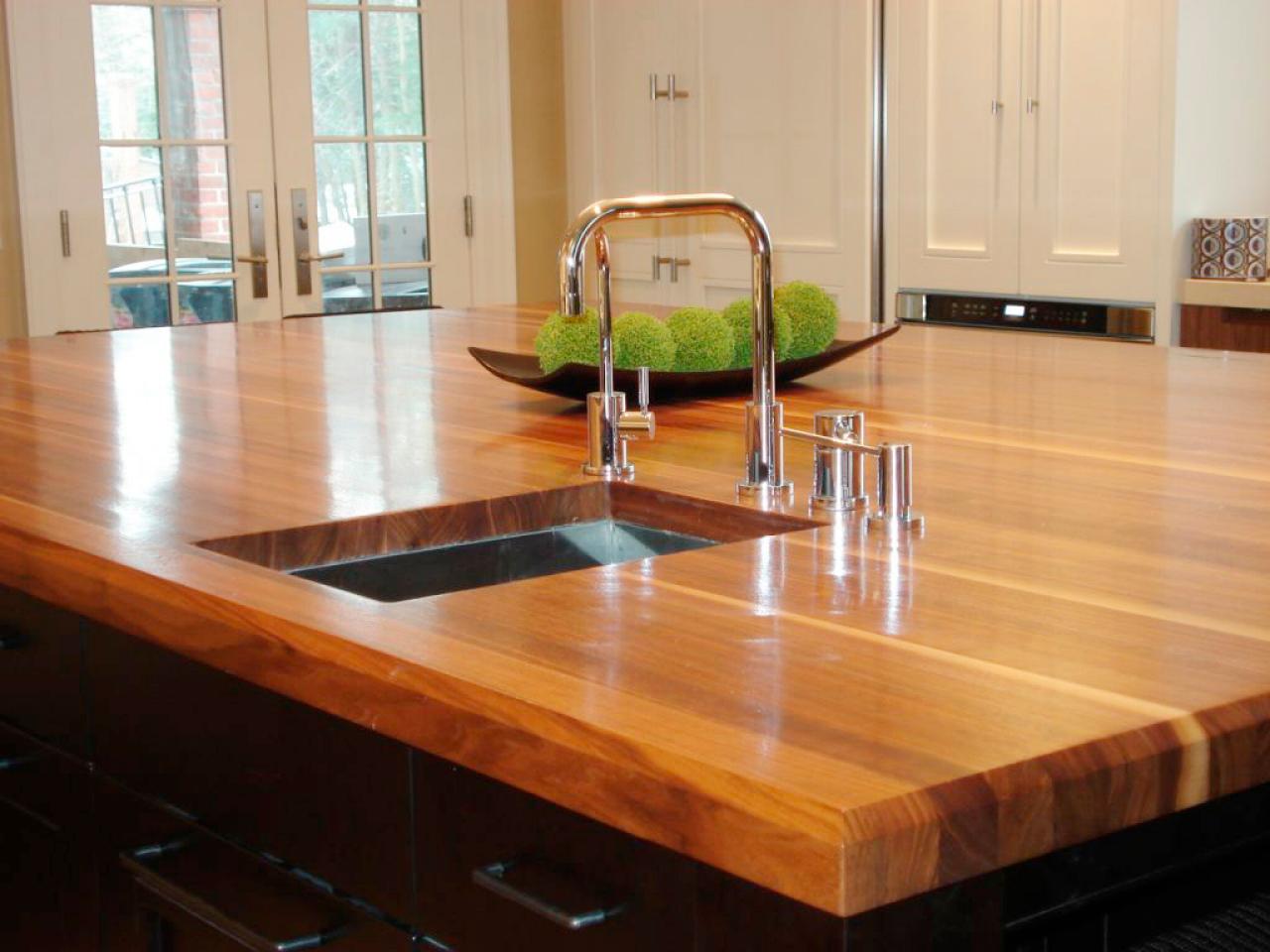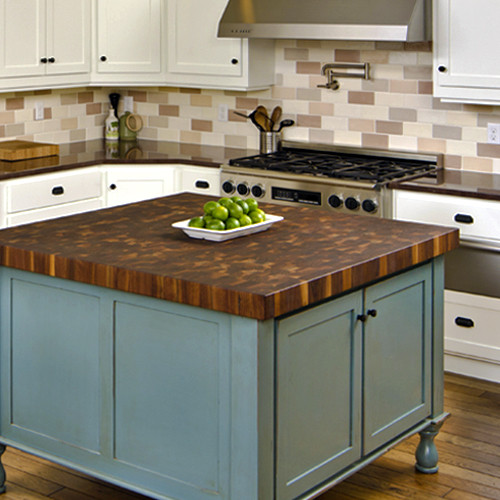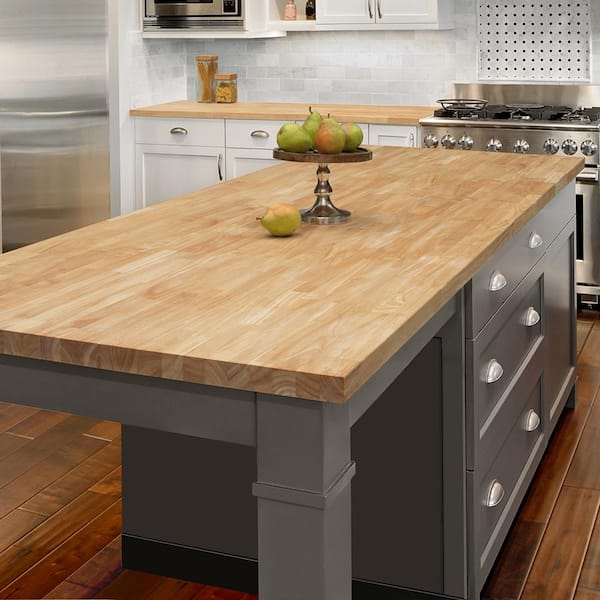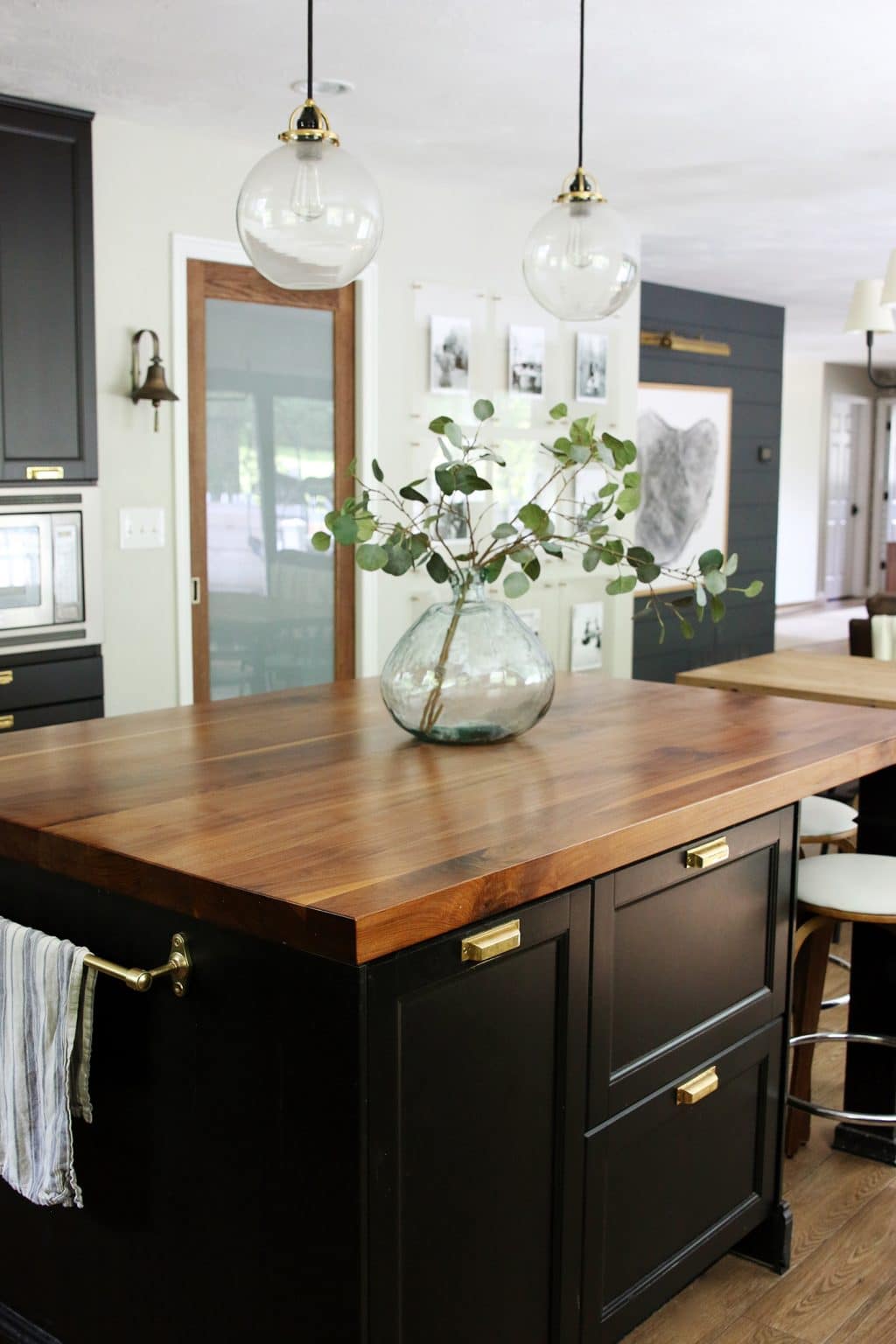A wood butcher block countertop is a classic and warm addition to any kitchen, providing both functionality and beauty to the heart of your home. Unlike many countertop materials, wood offers a unique character with its natural grain patterns, rich colors, and the organic feel it brings to any space. When treated and maintained properly, butcher block countertops can last for decades, making them a sustainable option that enhances the aesthetics of a kitchen.
They’re also more forgiving on sharp knives than stone or laminate, a fact that chefs and avid home cooks often appreciate. Whether you’re remodeling or just looking for a more eco-friendly countertop, butcher block has plenty to offer. However, it’s important to know what you’re getting into with this material so that you can fully enjoy its benefits without surprises.
One of the main draws of butcher block countertops is the option for custom cutting and shaping. Wood is naturally more versatile than stone, allowing homeowners to customize the surface to fit their exact specifications. For example, you might prefer an edge-grain construction, where the wood is cut so that the edges of the planks are facing upward, or an end-grain surface, where small blocks are arranged so that the end grain faces up.
Each type has unique strengths: edge-grain provides a uniform look and is more budget-friendly, while end-grain is highly durable and provides a checkered look. The flexibility of butcher block extends to the design, as well, with options like maple, oak, walnut, or cherry wood offering a wide variety of tones and finishes.

Another benefit is that butcher block countertops can be sanded and refinished. Over time, counters naturally get scratched or dented from daily use, but wood is one of the few countertop materials that can be refreshed. Sanding down the surface and reapplying oil or sealant can restore it to its original appearance, unlike stone or laminate which would need more significant repair or replacement. The process of refinishing isn’t too difficult either, making it a great DIY option for homeowners. You can use finer grits of sandpaper to remove any surface-level imperfections and even apply different finishes over time to update the look.
Maintenance is key to keeping your butcher block in good shape. Wood is porous, which means it’s more prone to absorbing liquids if it’s not properly sealed. Regularly applying mineral oil or butcher block conditioner can help protect it, keeping it from drying out and cracking. This routine isn’t difficult, but it does need to be done consistently to prevent issues like warping or staining. While the upkeep may seem like a drawback, many find the process enjoyable as it connects them to the material in a way that isn’t common with other countertop choices. Wood naturally ages, developing a patina that many find adds to its charm over time.
For those concerned with environmental impact, butcher block countertops can be a more sustainable choice than granite or marble, which require intensive mining. Wood countertops are often made from fast-growing tree species and can be sourced from sustainably managed forests. In addition, some manufacturers even offer reclaimed wood options, using lumber from old buildings or furniture to create a countertop with a unique history. Reclaimed wood countertops offer the dual benefits of reducing waste and adding character with their distinct patterns, stains, and finishes that can’t be replicated with new wood.

A unique aspect of butcher block is its ability to provide a ‘warm’ surface, both visually and physically. Unlike stone or metal countertops, wood doesn’t feel cold to the touch. It’s also slightly softer than harder surfaces, which can help protect delicate kitchenware from chips or cracks if accidentally dropped. For families, this softness can be beneficial, as it reduces the chance of injuries in the case of minor accidents. Butcher block’s warmth also extends to aesthetics, as it creates a cozy, inviting atmosphere. The natural colors and grains of wood have a grounding effect, making the kitchen feel like the true center of the home.
Of course, there are some downsides to consider. For instance, butcher block countertops aren’t naturally heat-resistant, so placing hot pots or pans directly on the surface can cause burn marks or discoloration. It’s important to use trivets or hot pads when working with high-heat cookware. Similarly, butcher block is prone to scratches and dents, especially if you’re using it as a cutting surface without a cutting board. While some people like the ‘worn-in’ look that results from scratches and minor dents, others prefer a pristine surface. Understanding your tolerance for imperfections is essential when deciding if butcher block is the right choice for you.
Butcher block also requires more cleaning than some other countertop types. While stone countertops can often be cleaned with a simple wipe-down, wood requires a gentler approach to avoid drying it out. Avoid harsh chemicals and opt for a mixture of mild soap and water, followed by a thorough drying. Excess moisture is another risk for butcher block countertops, as it can lead to swelling, warping, or even mold growth if not properly managed. That said, the reward is a countertop that looks beautiful and natural, fostering a connection to nature in a way that synthetic materials can’t match.
For those considering a butcher block in their kitchens, it’s also essential to consider the cost. While butcher block can be more affordable than some stone options, prices vary depending on the wood type, grain, and thickness. Maple, for instance, is usually less expensive than walnut, and edge-grain construction is typically more affordable than end-grain. Additionally, the need for regular maintenance products like mineral oil or sealant can add to the cost over time. On the plus side, if properly maintained, a butcher block countertop can last a lifetime, making it a good investment for many.

Butcher block countertops also lend themselves well to different kitchen styles. They’re equally at home in modern, rustic, or farmhouse kitchens, depending on the finish and color. A lighter wood with a natural finish works well in Scandinavian-inspired kitchens, while a darker, stained wood can create a dramatic look in a contemporary space. Their versatility in design can make them a focal point in the kitchen or seamlessly blend in with existing décor. Because wood is a neutral material, it pairs easily with other kitchen finishes, like stainless steel appliances or painted cabinetry.
However, adding butcher block countertops doesn’t mean you need to outfit your entire kitchen in wood. Many people choose to install a butcher block island or a specific section of the countertop for food prep, pairing it with a different material for the rest of the kitchen. This ‘mixed material’ approach is functional and adds interest to the kitchen layout. A dedicated butcher block section can be used exclusively for meal prep, creating a designated area for chopping and cutting while the rest of the countertop can be more resistant materials.
As for longevity, butcher block countertops age well with proper care. While they may develop a patina over time, regular maintenance can keep them looking fresh. For those who want to keep the countertop in prime condition, sealing it with food-safe finishes is recommended. Some opt to leave the countertop unsealed for a more rustic look, though this approach requires more frequent maintenance and careful use to prevent staining and bacteria buildup. This flexibility is part of what makes butcher block so appealing to a range of homeowners with different tastes and needs.

If you’re thinking about installing butcher block countertops yourself, it’s definitely a feasible project with the right tools and skills. Installing butcher block usually involves cutting the wood to fit and attaching it to the cabinetry with screws. Sanding, sealing, and finishing can be done once the countertop is in place, allowing you to personalize the final look. DIYers often find that installing a wood countertop is more manageable than stone, as wood is lighter and easier to work with. However, due to wood’s sensitivity to moisture and temperature, careful planning is necessary for a successful installation.
Butcher block countertops, when properly cared for, can become a legacy piece in a home. They’re often seen as timeless, bridging the gap between traditional and modern styles. Plus, if you ever decide to remodel or update the kitchen, butcher block countertops can be cut down and repurposed for other uses, such as furniture or shelving. Their durability and adaptability are key reasons why they’re such a beloved choice in kitchens.
In short, wood butcher block countertops are a fantastic option if you’re looking for a warm, natural, and sustainable material. While they require more maintenance than some other options, the trade-off is a countertop that adds character and beauty to your kitchen. The wood’s natural aging process only enhances its charm over time, giving it a unique look that can’t be replicated.

Common Mistakes to Avoid
Skipping the Sealing Process: Wood countertops need regular sealing to prevent moisture absorption, which can lead to warping or swelling. Many homeowners overlook this step, assuming it’s only necessary once. However, a fresh application of mineral oil or sealant every few months is crucial to keeping wood in top shape.
Using Harsh Cleaners: Wood is sensitive to certain cleaning chemicals, and using abrasive or harsh cleaners can strip the protective finish or even damage the surface. Stick to mild soap and water, and always dry the surface thoroughly.
Ignoring Minor Scratches or Dents: Wood is softer than other materials, so scratches or dents will happen over time. However, if these minor imperfections aren’t addressed, they can grow into larger issues. Sanding down small scratches and resealing the area can help maintain the overall look.
Neglecting to Use Cutting Boards: Although some people love the idea of using the countertop as a chopping surface, this can wear down the surface quickly. Using a separate cutting board will keep your butcher block looking fresh and extend its life.
Not Accounting for Heat Sensitivity: Unlike stone, butcher block countertops are not naturally heat-resistant. Hot pots and pans can leave burn marks or cause discoloration if placed directly on the wood. It’s essential to always use trivets or heat pads to protect the wood.

How often should I oil my butcher block countertop?
It’s generally recommended to oil your butcher block countertop once a month, especially if it’s used frequently. This frequency helps protect the wood from moisture and keeps it from drying out. If you notice the wood looking dull or dry, an extra application of oil can help rejuvenate it.
Can I use any type of oil on my butcher block?
No, only use food-safe oils like mineral oil or specialized butcher block oil. Vegetable oils can turn rancid over time, which can create an unpleasant smell and potentially attract bacteria. Mineral oil is an ideal option as it doesn’t go rancid and provides long-lasting protection.
Are butcher block countertops sanitary for food prep?
Yes, when properly sealed and maintained, butcher block countertops are safe for food preparation. Regular cleaning and reapplication of mineral oil or a food-safe finish help prevent bacteria growth, making them a great choice for home kitchens.

Can I refinish a butcher block countertop on my own?
Refinishing a butcher block is very DIY-friendly. Sanding down the surface to remove scratches, applying fresh oil, and sealing can restore its appearance. Just make sure to use food-safe products if you’ll be preparing food directly on the countertop.
What’s the best way to clean a butcher block countertop?
The best way to clean the butcher block is with a mild soap and water solution, followed by thorough drying. Avoid soaking the wood, and steer clear of harsh chemicals, as they can damage the finish. For tougher stains, a vinegar and water solution can help.
How long does a butcher block countertop last?
With proper care, a butcher block countertop can last for decades. Regular maintenance like oiling, sanding, and sealing helps extend its life. Over time, the countertop will develop a patina that only enhances its character, making it a durable and charming choice.

Related articles:
- Butcher Block Countertops Decor
- Butcher Block Countertops Cottage
- Stain Butcher Block Countertops
- Butcher Block Countertops Vintage
- Butcher Block Countertop Farmhouse Sink
- Mahogany Butcher Block Countertops
- Butcher Block Countertop For Kitchen Island
- Can You Paint Butcher Block Countertops
- Butcher Block Countertops With White Cabinets
- Pine Butcher Block Countertops